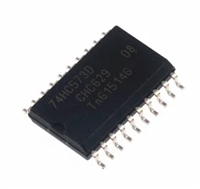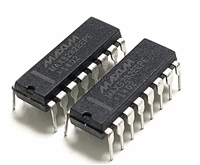Data Acquisition and Stimulus
Pattern Generation Modules
Vectors Up To 240 Bits Wide
Synchronized Clock Output
“Send Arm out to…” Coordinates
Vectors are defined as a “row” of
labeled data values, with each
data value from one to 32 bits
wide. Each vector is output on
the rising edge of the clock.
You can output data synchronized System Module Activity
to either an internal or external
clock. The external clock is input
via a clock pod, and has no
A “Send Arm out to…” instruction
acts as a trigger arming event for
other logic analysis modules to
begin measurements. Arm setup
and trigger setup of the other
logic analysis modules determine
the action initiated by “Send Arm
out to…”.
minimum frequency (other than
a 2 ns minimum high time).
Up to five, 48-channel 16720A
modules can be interconnected
within a 16900 Series mainframe.
This configuration supports
The internal clock is selectable
between 1 MHz and 300 MHz in
1 MHz steps. A Clock Out signal is
vectors of any width up to 240 bits available from the clock pod and
“Wait for External Event” for
with excellent channel-to-channel
skew characteristics (see specific
data pod characteristics in Pattern 8 ns.
Generation Modules Specifications
starting on page 23). The modules
operate as one time-base with
one master clock pod. Multiple
modules also can be configured
to operate independently with
individual clocks controlling
each module.
can be used as an edge strobe
with a variable delay of up to
Input Pattern
The clock pod also accepts a 3-bit
input pattern. These inputs are
level-sensed so that any number
of “Wait for External Event”
instructions can be inserted into
a stimulus program. Up to four
pattern conditions can be defined
from the OR-ing of the eight
possible 3-bit input patterns. A
“Wait for External Event” also can
be defined to wait for an Arm.
This Arm signal can come from
any other module in the logic
analysis system.
Initialize (INIT) Block for
Repetitive Runs
When running repetitively, the
vectors in the initialize (init)
sequence are output only once,
while the main sequence is
output as a continually repeating
sequence. This “init” sequence is
very useful when the circuit or
subsystem needs to be initialized.
The repetitive run capability is
especially helpful when operating
the stimulus module independent
of the other modules in the logic
analysis system.
Depth Up to 16 MVectors
With the 16720A pattern
generator, you can load and run
up to 16 MVectors of stimulus.
Depth on this scale is most useful
when coupled with powerful
stimulus generated by electronic
design automation tools, such as
SynaptiCAD’s WaveFormer and
VeriLogger. These tools create
stimulus using a combination of
graphically drawn signals, timing
parameters that constrain edges,
clock signals, and temporal and
Boolean equations for describing
complex signal behavior. The
stimulus also can be created from
design simulation waveforms. The
SynaptiCAD tools allow you to
convert .VCD files into .PGB files
directly, offering you an integrated
solution that saves you time.
Figure 2. Define your unique stimulus vectors, including an
initialization sequence, in the Sequence tab.
5






 深入解析AD7606高性能多通道模数转换器:资料手册参数分析
深入解析AD7606高性能多通道模数转换器:资料手册参数分析

 74HC573三态非易失锁存器(Latch)资料手册参数分析
74HC573三态非易失锁存器(Latch)资料手册参数分析

 MAX3232 RS-232电平转换器资料手册参数分析
MAX3232 RS-232电平转换器资料手册参数分析

 MAX485 RS-485/RS-422收发器资料手册参数分析
MAX485 RS-485/RS-422收发器资料手册参数分析
